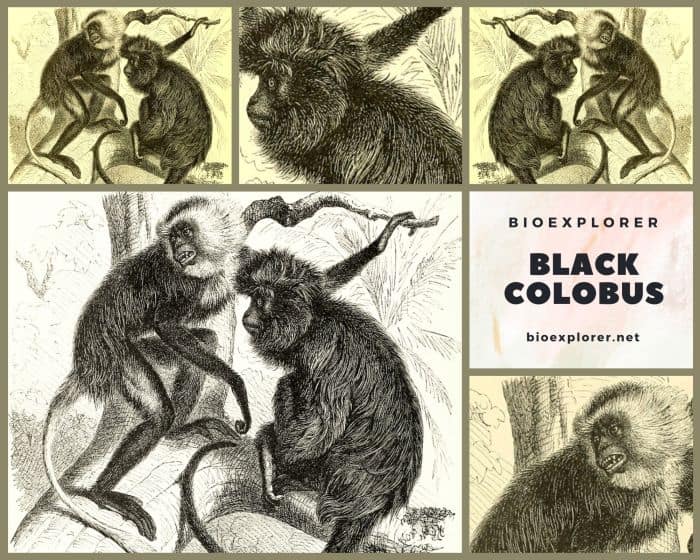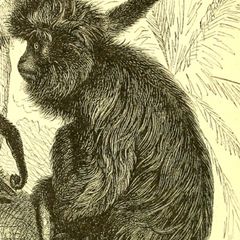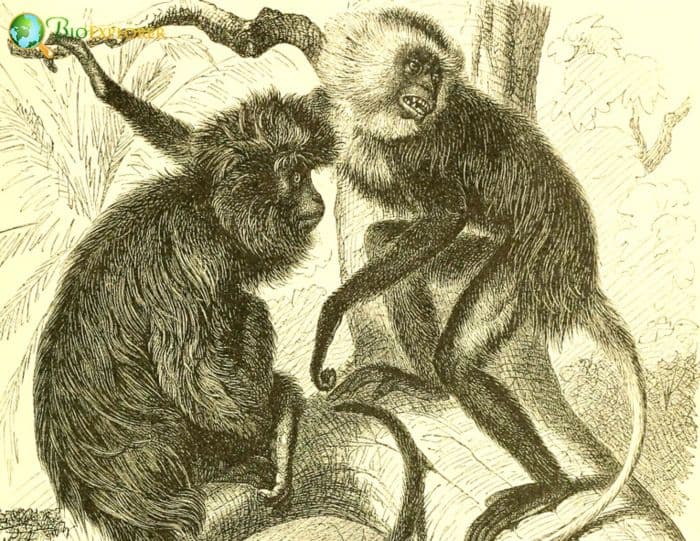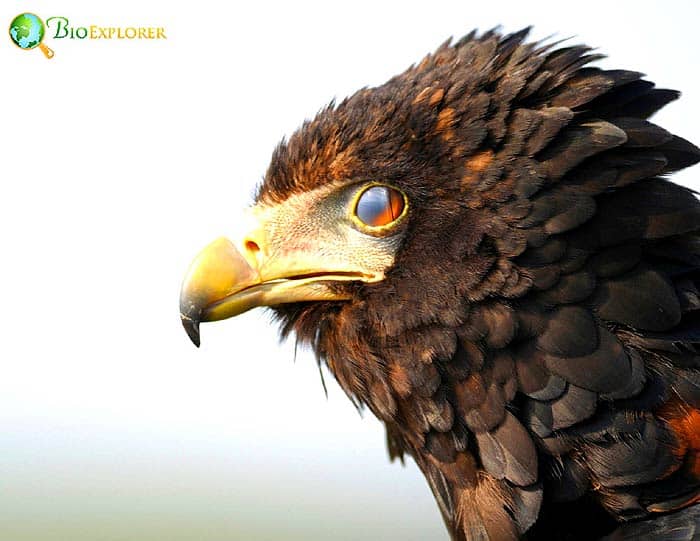
| Animalia | Primates | Cercopithecidae | Colobus | Colobus satanas |


- Common Name: Black Colobus
- Taxonomy Classification Year: 1838
- Monkey Size: 50 to 70 cm (19.7 to 27.6 in)
- Skin Color(s): Black
- Habitat: Rainforest
- Diet: Herbivorous
- Native Countries: Equatorial Guinea, Cameroon, Gabon, Democratic Republic of Congo
Black Colobus Distribution
Black Colobus Characteristics

The black colobus[1], also known as satanic black colobus, is a species of Old-World monkey in the Colobus genus.
- The species occurs in a small area in west central Africa. Being the largest monkey species (with a head-to-body length of 50 to 70 cm and a long tail of about 80 cm), they have a slender build and calluses: hard skin pads on the posterior.
- There is minimal sexual dimorphism between the 2 sexes: adult males can weigh between 10 and 15 kg, while females weigh between 10 and 11 kg.
- The black colobus is covered in black fur in addition to its ears and face and has longer hair on its forehead and cheeks.
- Unlike other types of colobus monkeys, black colobus monkeys do not have white markings.
- Black Colobus monkeys live in the canopy layer of the rainforest.
What Do Black Colobus monkeys Eat?
The Black Colobus monkeys are mainly seed eaters who get nourishment from many plant sources including[¶]:
- Persimmons (Diospyros)
- Butter tree (Pentadesma butyracea)
- African oil palm (Elaeis guineensis)
- Boleko nut (Ongokea gore)
- African Teak (Milicia excelsa)
- African Nutmeg (Pycnanthus angolensis)
What Eats Black Colobus monkeys?

Common predators for the Black Colobus monkeys are Leopards (Panthera pardus), Crowned Eagles (Stephanoaetus coronatus) and humans[¶].
Black Colobus Facts
- The black colobus is the oldest of the 5 recognized species in the genus Colobus and is said to have diverged 3 to 4 million years ago.
- The word “colobus” originated from Greek, meaning “mutilated“. All colobus monkeys have a short stump where the thumb would be.
- Black colobus monkeys live in multimale groups of 10 to 20 individuals.
- The species is territorial and emits loud calls to keep other groups away from the foraging area.
- These primates are diurnal and rest about 60 percent of their time. They spend the rest of the day foraging, socializing, and moving.
Suggested Reading: Types of Monkeys
All Eagle Species demonstrate their power by preying on animals like the Black colobus in rainforests.
Cite This Page
APA7MLA8Chicago
BioExplorer.net. (2025, December 15). Black colobus. Bio Explorer. https://www.bioexplorer.net/animals/mammals/monkeys/black-colobus/.
BioExplorer.net. "Black colobus" Bio Explorer, 15 December 2025, https://www.bioexplorer.net/animals/mammals/monkeys/black-colobus/.
BioExplorer.net. "Black colobus" Bio Explorer, December 15 2025. https://www.bioexplorer.net/animals/mammals/monkeys/black-colobus/.











